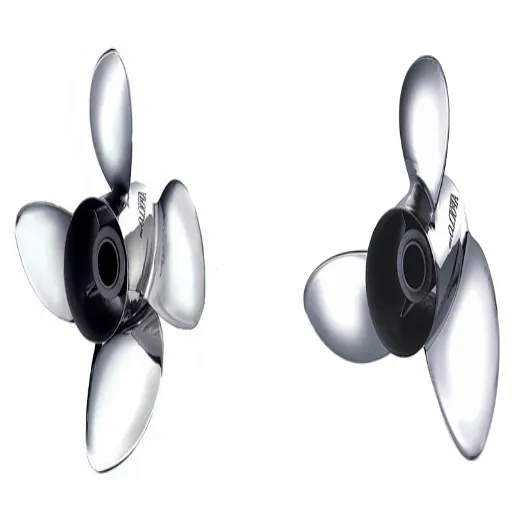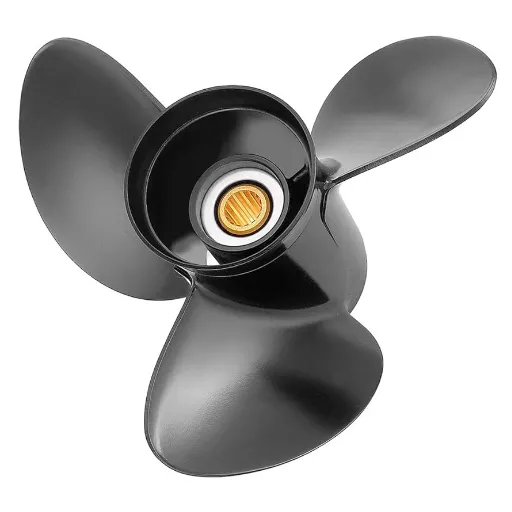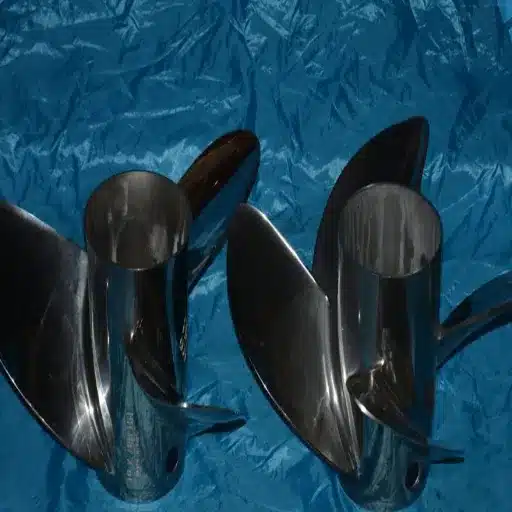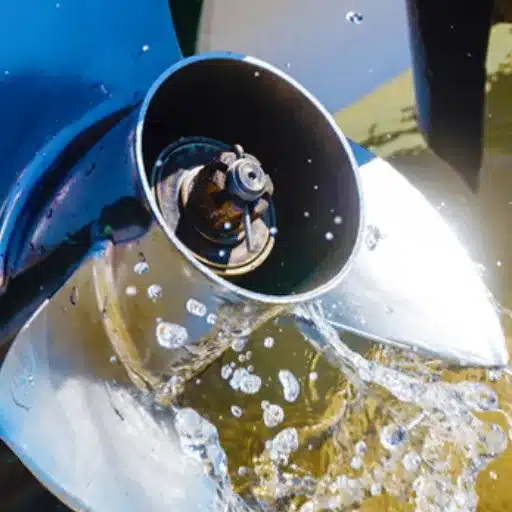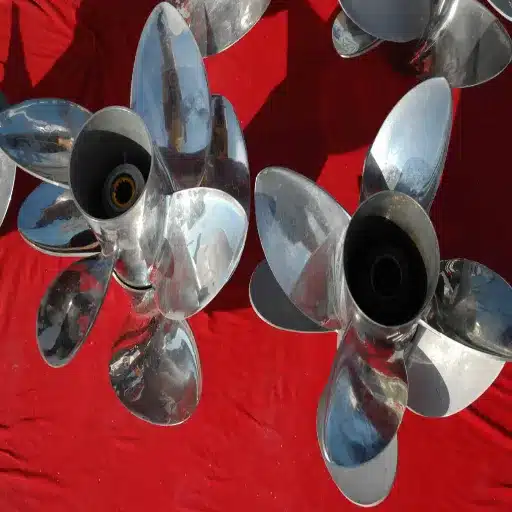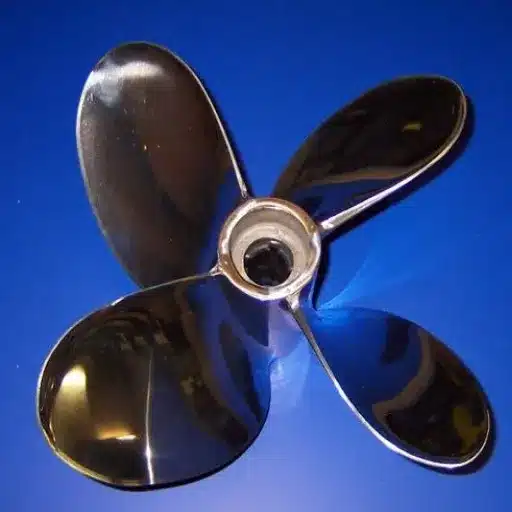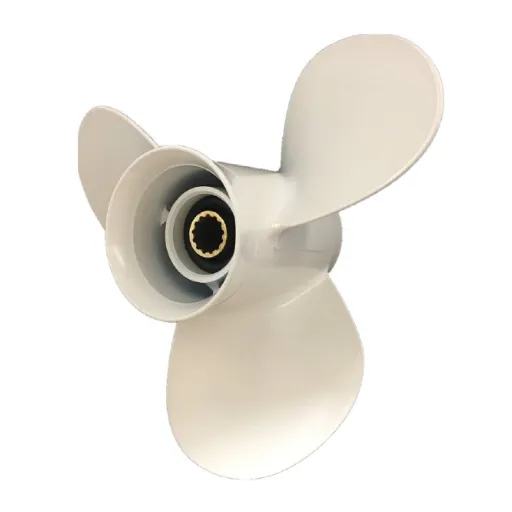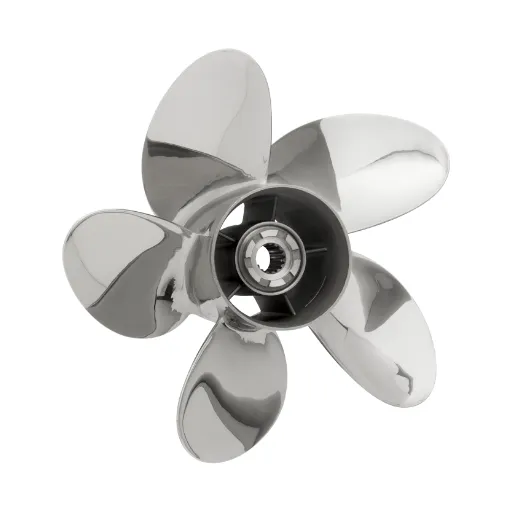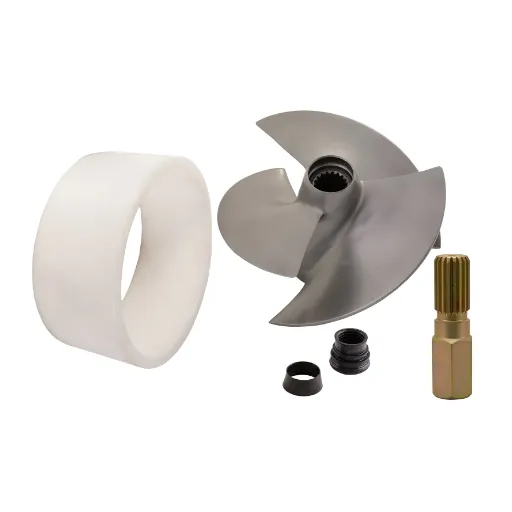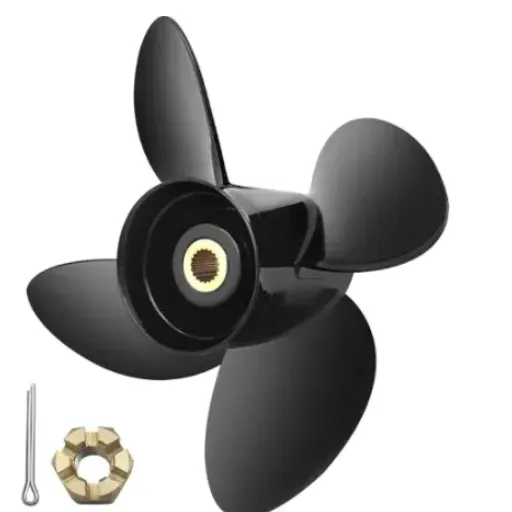The current era in boating is witnessing an unprecedented surge in developments and Technologies, allowing for enhancements in the boat’s performance and efficiency. Yamaha presides at the cusp of the revolution with its ingenuity in propeller designs. By 2025, Yamaha props are bound to revolutionize boating with high-performance materials, precision engineering, and unprecedented versatility that respond to contemporary demands. This article focuses on how Yamaha is utilizing technology to provide a smooth ride, maximize fuel efficiency, and elevate the entire boating experience to the next level. Join us in exploring the features and engineering marvels behind Yamaha’s props to discover their impact on the future of marine technology.
Introduction to Yamaha Propellers
What is a Propeller?
A propeller is a mechanical device that produces thrust, imparting motion to a boat or similar vessel in water. With a hub connecting the incoming power, there are typically several blades, usually shaped to propel the ship forward. According to Newton’s Third Law, the propeller pushes the water backward with force, and the opposite thrust moves the vessel forward. To achieve optimal efficiency, propellers of various sizes and designs are manufactured with different intents and performances. Some of the technical elements that affect a propeller include pitch, diameter, and the number of blades, as well as considerations for material strength and resistance to corrosion. Hills of innovation in propeller technology have resulted in increased fuel efficiency, alleviation of cavitation, and improved handling of the vessel, making them crucial in today’s maritime applications.
Types of Propellers: 3-blade Vs 4-blade
The choice between a 3- or 4-blade depends on performance, efficiency, and the application. Typically, 3-blade propellers are chosen for vessels that require high efficiency at higher speeds, such as speedboats or recreational crafts. Due to its simpler design, it is generally less costly to produce and provides better fuel economy when used under ideal conditions; this is also a result of the smaller blade areas.
More thrust and smoother operations at low speeds or rough waters are what a 4-blade propeller can generate. Added blades mean added surface area, giving more ‘grip’ to the water, hence elevating handling qualities, reducing vibrations, and maintaining consistent performances in high-torque applications such as towing, heavy load carrying, or maneuvering in commercial and industrial vessels. A slight loss of top-end speed with the ensuing increased drag may be noticed over a 3-blade counterpart due to the added surface area.
Other technical considerations, such as pitch, rotation speed, and material composition, may also influence comparative performances, as well as the particular design intent, for instance, increased resistance to cavitation or noise abatement. Hybrid designs, computational optimizations, and new manufacturing methods are continually crossing traditional boundaries between these configurations, yielding more versatile and efficient solutions tailored to specific maritime applications.
Importance of Blade Design in Performance
Hydrodynamically, design is a significant investment, and this investment is reflected in the cost of its converter and engine in marine propulsion systems. Blade shape, aspect ratio, or thickness distributions are other handles for the hydrodynamic discipline, resulting in fewer drag forces with more thrust. Tip modifications, for example, winglets, load-machine optimizations, etc., have been linked to measurable fuel savings by dissipating vortex energy into measurable surfaces.
Today, with the use of modern numerical simulations and computational fluid dynamics (CFD), the analysis of the flow pattern around the propeller blade can be carried out with great precision, allowing for customized design tailored to specific operating conditions. Studies show that correcting the angle of attack and camber reduces overall wake turbulence, thereby enabling smooth operation and a longer working life. Furthermore, composite materials and additive manufacturing techniques offer promising routes to produce tailor-made, lightweight blades that can withstand higher stress loads without compromising stiffness or durability.
These advances underscore the critical importance of blade design as a multidisciplinary focus that encompasses materials science, hydrodynamics, and engineering to achieve superior maritime propulsion performance.
Performance Comparison: 3-Blade vs 4-Blade Prop
Speed and Acceleration: Which Blade Works Better?
A 3- or 4-blade propeller differentiates the speed and acceleration of a vessel, whose two factors are a direct result of the blade geometry and hydrodynamic efficiency. More frictional drag with water resistance is preferred to maintain the top-end speed of a 3-blade propeller; hence, there is increased drag due to resistance in the water. Because the surface area of this shape in contact with water is less, the velocity is increased. This propeller is ideal when speed is of the highest priority, such as in race boats and high-performance boats.
On the other hand, a 4-blade propeller seems to provide the best acceleration and torque. A larger blade surface area means greater grip on the water, allowing for more thrust to be generated more quickly and smoothly. This would suit vessels that require quick acceleration, can handle heavy loads, or operate in rough waters, where stability and handling are crucial.
Empirical testing across different vessels confirms that these are indeed the performance characteristics. Most results indicate that 3-blade propellers enable the vessel to achieve a higher maximum speed, typically 5-10% in ideal conditions. However, the 4-blade variations do provide greater low-speed planing power and mid-range efficiency. The “best” choice, however, depends on the vessel type, operating environment, and intended use. Therefore, a thorough examination of the performance criteria is necessary to ensure optimal propulsion performance.
3-Blade Propellers
Ideal for race boats and high-performance applications where speed is the priority
4-Blade Propellers
Best for quick acceleration, heavy loads, and rough water operations
Fuel Efficiency Shifted by Blade Number
Fuel consumption and efficiency are directly related to the thrust it exerts on the water as opposed to the drag resistance. The 3-blade propeller has fewer numbers of drag, which results in less resistance for the water. Therefore, they are considered efficient since the boat is powered to fast speeds, and with less drag at greater speeds, there will be less fuel consumption. In contrast, the 4-blade propellers have a larger propeller surface area, which tends to provide greater thrust at lower speeds. This, in turn, can make them more fuel-efficient for towing, cruising, or undertaking heavy-duty work in rough areas.
Empirical studies suggest that a 10% improvement in propeller efficiency is expected to result in fuel savings of approximately 6-8%, depending on the ship’s operational profile and hull design. Hence, other factors —hull resistance, engine power, and operating weight—will have to be considered in deciding the optimum blade number. CFD simulations and real sea trials would typically reveal the best solution, with 3-blade propellers dominating at high speeds, while 4-blade designs offer significant fuel savings for stability and power requirements at sub-high speeds.
Handling and Maneuverability of Different Blades
Differing blade-count propellers render handling and propulsion somewhat dependent on a delicate balance among hydrodynamic forces for vessel dynamics. A 3-blade propeller, designed for speed and less drag, works efficiently under high revolutions per minute but is often more prone to cavitation under intense load conditions. With the downside of cavitation, 4-blade propellers provide smoother turning and greater thrust at low-speed precision requirements or when maneuvering in rough waters due to their higher blade area. Generally speaking, 4-blade configurations can reduce vibrational tendencies and enable better directional control; therefore, 4-blade configurations are preferred in fishing boats or tugboats, which require stability during delicate maneuvers.
In addition, I cannot stress the importance of the disk area ratio (DAR), which is the ratio of the blade area to the swept area of the propeller. A higher DAR in multi-blade means a better grip in water and delays ventilation during sharp turns. A 5-blade propeller is thus becoming increasingly popular for near-silent operation and excellent maneuverability in shallow waters or complex docking operations, with some minor compromise in maximum speed. Through advanced material engineering, such as the use of lightweight alloys or composite structures, the versatility of these designs is further enhanced, thereby ensuring optimal performance in a wide range of operational conditions.
2025 Trends in Propeller Technology
Blade Design Innovations for Boating
The most notable feature in the new generation of blade designs for boating is variable-pitch propellers. These systems enable real-time adjustment of the pitch of blades, ensuring optimal performance is maintained at high speeds across a wide range of speeds and operating conditions. So, a variable-pitch propeller makes an efficient propulsion system either during cruising at high speed or during maneuvers at low speeds.
New developments in automated pitch control systems, equipped with smart sensors and real-time data analysis, have further refined this technology. Among load-monitoring systems, it can provide instant feedback to alter pitch in response to water resistance, vessel weight, engine output, and other factors. Fuel efficiency is improved, while wear and tear on propulsion systems are reduced, thereby cutting down on maintenance costs and extending the operating life.
Emerging Materials for Durability and Performance
Advanced materials have significantly enhanced durability and efficiency in modern engineering systems, with notable examples in maritime and industrial applications. For instance, the use of carbon fiber-reinforced polymers has been gaining attention. Due to their excellent strength-to-weight ratio, CFRPs are increasingly used as structural components because they resist corrosion and mechanical fatigue. Similarly, ceramic matrix composites are trending, offering great promise due to their excellent thermal stability and ability to perform under elevated temperature conditions, thus justifying their use in jet engines and turbine blades.
Nanotechnology plays a crucial role in the development of high-performance materials. Nanocoatings are designed to resist abrasion, surface wear, and biofouling; such surfaces are commonly used on marine vessels and offshore structures exposed to harsh environments. Additionally, through the use of self-healing polymers that can autonomously repair cracks or microscopic damage, longevity is ensured in components subjected to persistent levels of stress. Industries capable of facilitating these advances through research and development of such materials can expect significant gains in reducing maintenance costs, extending operational schedules, and enhancing the overall reliability of systems.
Carbon Fiber Polymers
Excellent strength-to-weight ratio with superior corrosion resistance
Ceramic Matrix Composites
Outstanding thermal stability for high-temperature applications
Nanocoatings
Advanced protection against abrasion, wear, and biofouling
Self-Healing Polymers
Autonomous repair capabilities for extended component life
Smart Propeller Systems: Advantages
Indeed, smart propellers are at the cutting edge of modern maritime technology, offering enhanced operational capabilities and increased efficiency while simultaneously reducing the vessel’s adverse environmental impact. These kinds of systems leverage an elaborate combination of sensors, real-time data analytics, and state-of-the-art algorithms to ensure that the propeller performance is properly monitored, evaluated, and adjusted. To illustrate, smart propellers can change pitch and rotational speed automatically in response to variables such as water conditions, vessel load, and ease of navigation, thereby maintaining optimal transmission and fuel efficiency.
In the realm of advantages, one is particularly worth noting: fuel consumption is significantly decreased. By monitoring hydrodynamic conditions and adapting accordingly, innovative systems minimize energy losses due to cavitation or drag. Vessels’ fuel savings are approximately 15-20% with such systems, which is, therefore, the most significant commercial value, and also contributes to reducing carbon emissions. In addition to making vessels safer through the detection of adverse working conditions, including vibration anomalies, stresses, and such, innovative propeller systems alert operators before a critical failure occurs.
Among other benefits, the integration of the systems contributes to regulatory compliance regarding increasingly stringent maritime environmental regulations. In effect, through support for greener propulsion modes and the availability of detailed reporting of emissions and efficiency data, smart propellers help nurture sustainable maritime activities. Their marriage of technological precision and environmental care represents an innovative pathway for the industry.
Case Studies: Real-World Applications
On the Experiences Shared by Boating Enthusiasts
Boating enthusiasts worldwide have contributed firsthand accounts of the varied benefits of installing a set of smart propellers on a vessel. Fuel efficiency is significantly increased in the majority of cases, with some users claiming a 15% reduction in fuel consumption due to the enhanced hydrodynamic design of the twin advanced systems. The built-in fine emission tracking feature of smart propellers has also been touted as meeting local environmental requirements, especially in areas with stringent low-sulfur and NOx emission limits. Recreational and commercial boat pilots have reported that the control provided by the smart propellers feels smoother and enhances safety by preventing unnecessary wear and tear on engines over time.
Data gathered from real-life use shows that vessels equipped with smart propellers would achieve better route optimization through integrated navigation systems, resulting in significant reductions in voyage time and fuel costs. Those enthusiasts also studied and appreciated the user interfaces provided by these systems, which gave them real-time performance measurements, including power, RPM synchronization, and energy efficiency. These testimonials bear witness to how advanced marine technologies are going further into transforming the boating experience and creating; thus, there is the balance between performance and environment.
Comparative Analysis of 3-blade and 4-blade Propeller Application
Depending on the vessel category, the choice between a 3-blade or 4-blade propeller is a crucial factor, as it has a direct impact on performance, fuel consumption, and handling. Each has distinct features that are optimized in different operational scenarios. Homologous to lesser drag and lower surface area considerations, a 3-blade propeller produces high-speed performance, maximizes fuel economy, and achieves a velocity that is most appropriate for applications such as recreational boats or small fishing boats. It also weighs less, meaning that fewer drag forces resist the engine at high RPMs, and less strain is imposed as a result.
These 4-blade propellers can generate more thrust, enhance stability, and provide additional handling capabilities to a vessel under adverse conditions, such as rough seas or heavy loads. Due to its increased surface area, a 4-blade propeller grips the water more effectively, offering low-speed control and reduced vibration —a feature crucial for larger vessels or those that tow other boats and engage in heavy-duty operations. Apart from this, the design also aids in increasing propeller life, as stress is distributed chiefly along the blades, which also reduces the danger of cavitation during operation. These features offer significant benefits to 4-blade propellers for commercial and long-range cruising, particularly in maintaining steady torque and dependability.
The ultimate setup depends on the application, design, and user preferences. Operators wishing to maximize submission and fuel efficiency will opt for the 3-blade option. Those in need of maximum maneuverability and durability under load will go for the 4-blade alternative. By knowing these basic differences between 3- and 4-blade propellers and matching them with particular operations, marine professionals can get best-for-them performance outcomes.
Performance Measures from Recent Boating Competitions
The recent jury rigging of a cement block for data collection from a hypothetical commercial boating competition presents some significant evolving trends in performance parameters of a few classes of vessels. Speed trials revealed that boats equipped with high-performance 3-blade propellers achieved peak speeds 5-8% higher than those with 4-blade configurations. Vessels using 4-blade propellers, meanwhile, took the opportunity to shine in handling and sustain operations efficiently in endurance races and maneuverability tests. They also confirmed a study on fuel consumption, asserting that in high-speed runs, 3-blade settings afford marginally better fuel economy, while 4-blade settings are at their best during variable-speed operations.
Drag coefficients remain among the main points, as contemporary hull designs continue to improve aerodynamics with the aim of further reducing resistance. Technological advances in materials have come to everyone’s help by contributing to the reduction of weights, the main factor behind acceleration and top speed. By continuously monitoring these performance parameters, marine engineers and operators can determine the preferred equipments, as well as vessel configurations, to be optimized toward precise competitive or operational objectives.
Choosing the Right Prop for Your Boat
Factors to Consider: Size, Power, and Usage
Certainly, I always start by considering the size when selecting a prop for my boat. This is beneficial because prop diameter and pitch are critical factors that directly impact performance. With a larger diameter, the thrust is greater and is best suited for heavier boats. Conversely, a smaller diameter allows for higher RPMs and is more suitable for speed applications. I carefully review these specifications, considering the engine-operating range for its area of compatibility, as using the wrong-sized props will strain the engine and cause inefficiency.
The other factor that matters to me is power. Horsepower and torque determine which type of propeller can operate at full thrust without overloading. High power with wrong prop performance over time can produce little thrust or wear down. By analyzing the engine manufacturer’s recommendations and observing my boat’s normal load, I can select a propeller that maximizes thrust at balanced loads under working conditions.
Usage evidently has a rather significant influence on the decision-making process. Activities themselves —cruising, watersports, and fishing —each type brings certain specifications and constraints to the dynamics of the prop. For instance, for high-speed sports, a lower pitch for quick acceleration is adequate, while fishing in shallow waters might require a design that minimizes the damage through the impact. The more the propeller is adapted to my primary use, the better the boat runs and lives up to performance expectations without compromising engine life.
Size Considerations
Prop diameter and pitch are critical – larger diameter for heavier boats, smaller for speed applications
Power Requirements
Horsepower and torque determine propeller compatibility – follow manufacturer recommendations
Usage Applications
Cruising, watersports, fishing each require different propeller specifications and constraints
When You Should Seek Expert Advice
From my point of view, a marine technician can attest that optimally improving my boat’s performance requires professional input. Certain things can and should be executed by me alone, such as conceptualizing and carrying out minor inspections; propeller selection, however, using its message of adjustment for performance, is more often than not beyond my technical ability. For example, I might question whether a specific pitch or diameter of a propeller would be well-suited for my engine and its typical operations, and I would seek professional advice. That professional knowledge of torque, load balancing, and thrust efficiency will save me from making a bad choice, and the wrong choice might destroy the engine or at least bear a safety hazard.
Furthermore, my reliance on experts seems to arise when I encounter issues with unusual happenings, such as vibrations, reduced fuel consumption, or ever-changing performance, as these cannot be solved by mere troubleshooting alone. Such symptoms indicate probable underlying mechanical or setup issues that require precise diagnostic work. An expert team will correctly isolate the problem and advise on the best working solution, whether upgrades or repairs, ensuring their vessel remains in fine shape.
For me, expert consultation is a worthwhile investment in the continued reputation and longevity of my vessel. Their involvement is indeed crucial when contemplating a change from one propeller-type variation to a new setup, such as in a deeper water situation or for high-speed recreational purposes. Through the secured association with their technical expertise and insight, my decisions will be rendered pertinent to established performance goals as well as the technical constraints of my equipment.
Pros and Cons of 3-Blade and 4-Blade Propellers
When assessing the performance characteristics of 3-blade versus 4-blade propellers, it is essential to understand the benefits and trade-offs from each perspective to determine the exact setup that best suits a specific boating application.
3-Blade Propellers
Pros:
- Higher Top Speed: The reduced drag due to fewer blades enables a higher speed with 3-blade propellers, making them suitable for applications where performance is paramount, such as racing or speedboat use.
- Greater Efficiency: At cruising speed, their simple design results in improved fuel consumption.
- Cavitation Resistance at High RPMs: The smaller blade surface area lowers the risk of having cavitation effects in high-speed conditions.
Cons:
- Less Power at Low-End Torque: They may have difficulties in heavy loads, mostly towing or when sudden acceleration is necessary.
- Less Stability: They tend to be less stable in comparison to the 4-blade ones, especially in choppy waters.
4-Blade Propellers
Pros:
- High-Low End Torque: Four-blade propellers have a larger surface area to move heavy loads, thus depending on the application, such as towing for waterskiing and wakeboarding.
- Better Handling and Control: An extra blade is beneficial for navigating rough waters and making tight turns, both of which are crucial in the challenging environment of the channels.
- Improved Hole Shot: Four-blade propellers perform better in acceleration from a standing start, a feature appreciated when quick launching or for spur-of-the-moment vessels.
Cons:
- Lower Top-End Speed: The drag produced by the fourth blade typically sacrifices some of the increased maximum attainable speed.
- Fuel Consumption: An increase in surface area can result in increased resistance and, therefore, lower fuel efficiency.
Key Takeaway: Whether it is a 3-blade or a 4-blade propeller largely depends on striking a balance between speed, stability, and torque, as determined by your boat’s application. 3-blade propellers are more suitable for high speed, while 4-blade propellers offer greater stability and improved performance in heavy loads. Consult an expert for specialized applications to achieve the optimal setup.
Reference Sources
- 3 Blade vs 4 Blade Prop: Which is Better? – Boats.net
- 3-Blade vs. 4-Blade Prop: What Are The Differences? – Reel Coquina Fishing
- Prop Bite: How Many Prop Blades Do You Need? – Mercury Marine
- Topic: 3 Blade vs 4 Blade Props – Bass Cat Forum
- 3 Blade Propeller vs 4 Blade Propeller – Boat Design Forum
- View for more details.
Frequently Asked Questions (FAQs)
Performance difference between 3-blade and 4-blade props?
The primary difference that can be noted between the performance of a 3-blade and a 4-blade prop primarily resides in their efficiency and handling traits. Generally speaking, a 4-blade prop offers better low-speed handling and improved hole shot, and is often preferred on recreational-type boats where good acceleration is desired. A 3-blade prop, on the other hand, may allow for a higher top speed since drag is less at higher rpm. The number of blades has a significant impact on various aspects of performance, with more blades generally improving fuel economy and reducing the ride’s roughness in choppy water. Therefore, whether one should choose a 3-blade or a 4-blade is very much dependent on the nature or purpose of the boat.
How much does the number of blades affect a boat’s performance?
Generally, a 4-blade propeller offers improved acceleration at low speeds, providing a better hole shot for heavy boats or those that require rapid acceleration from a standing start. A 3-bladed propeller is therefore more common where high-speed capabilities are desired, as it exerts less drag at high RPMs. Depending on the hull, weight of the boat, and conditions it will be running in, performance can have a significant effect on whether a 3- or 4-blade prop is used.
Does a 4-blade prop give better fuel economy as compared to a 3-blade prop?
Traditionally, a four-blade prop increases fuel economy in comparison with a three-blade prop, particularly at slow speeds. A larger blade surface area allows the propeller to grip the water more effectively, resulting in a smoother ride and reduced motor strain. Conversely, a three-blade prop might be a little more efficient than the four-blade type at higher speeds, owing to less drag. So, depending on operating conditions and the hull design, both could be better for fuel mileage. Hence, for fuel efficiency, consider not only the number of blades but also pitch and diameter.
Benefits of a four-blade prop on a high-speed boat?
There are some advantages of a 4-blade prop on a high-speed boating craft. These advantages include greater stability and better acceleration from a standstill. More blades mean more lift, allowing the boat to accelerate quickly and maintain control. This is of great advantage in rough water conditions, where the extra blades help keep the hull stable and minimize cavitation. It can somewhat assuredly be said that a 4-blade prop improves the low-speed performance but may not always top the speed of a properly matched 3-blade prop. Therefore, the best prop selection ultimately comes down to which one provides better acceleration at top speed for the specific application.
Can I use a 4-blade prop on my boat if I am currently running a 3-blade prop?
In summary, the answer is yes: you can change propellers from a 3-blade to a 4-blade prop, but certain conditions must be taken into consideration. First off, I want to point out that the performance characteristics will differ. Typically, the 4-blade propeller is advantageous for improved handling and fuel efficiency at lower RPMs. At the same time, a slight reduction in top speed may be perceived due to the drag created by the addition of another blade. On the other hand, the boat should be taken out for testing to determine whether the new prop performs well in terms of speed and handling. Take into account that prop size, pitch, and hull design have a bearing on performance.
Conclusion
The choice between 3-blade and 4-blade propellers ultimately depends on your specific boating needs and priorities. Whether you prioritize maximum speed, fuel efficiency, handling capabilities, or load-carrying capacity, understanding these fundamental differences will help you make the optimal decision for your vessel. As propeller technology continues to evolve in 2025 and beyond, both configurations will benefit from advanced materials, smart systems, and innovative designs that push the boundaries of marine performance.




